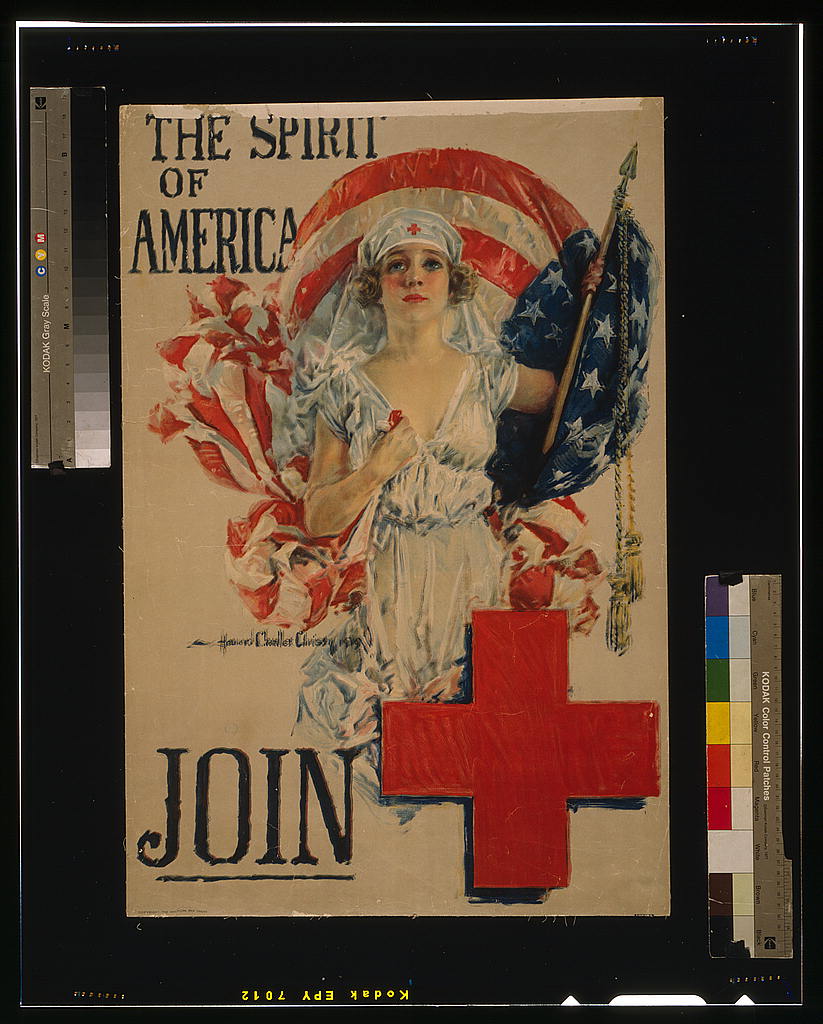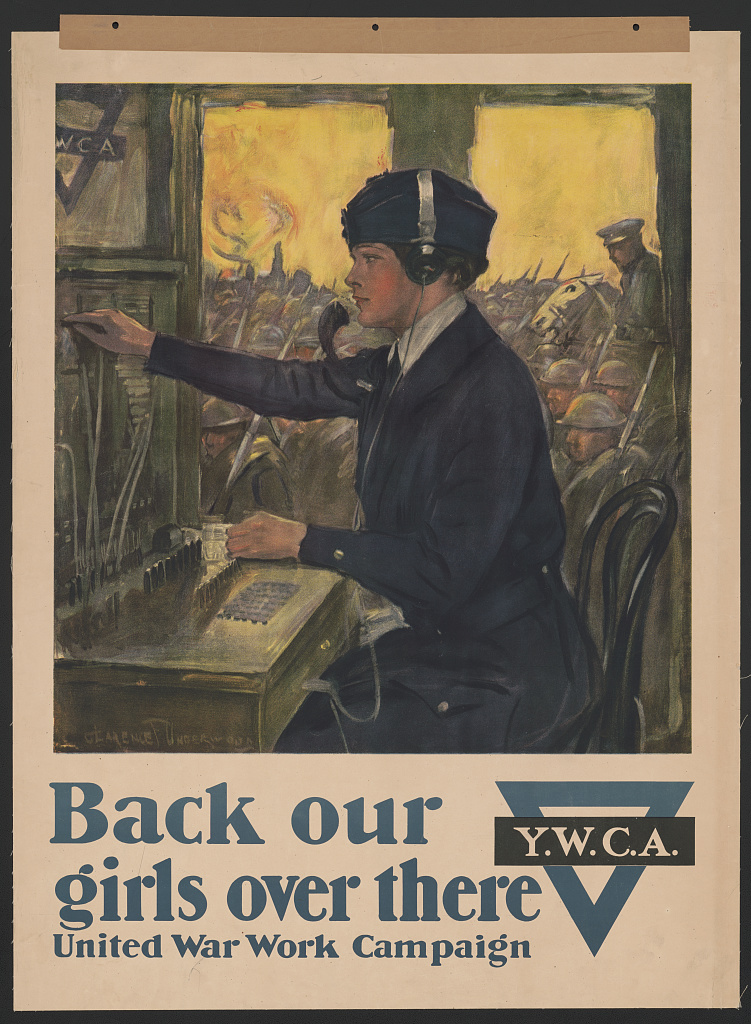Sexualizing Joan of Arc
World War I propaganda posters portrayed women in a variety of ways. They were damsels in distress (waiting for a man or the country to save them), objectified sex symbols (even offered as a sexual reward to recruits), and workers1.
The following poster sexualizes Joan of Arc, who is remembered as a heroine who saved her country.
Portrayal of Nurses
Women were recruited to the war front as nurses for the Red Cross. Overall, they were depicted femininely.
Eventually, concerns about nurses seducing soldiers surfaced. Some Americans feared that while soldiers were away from their wives, they were tempted by the sexually desirable nurses. The government used propaganda to dissuade the public from this notion. Posters were made to represent women as motherly figures to soldiers, to heal their wounds and homesickness.1
The poster below reflects this shift in how nurses were portrayed.
Woman Worker vs. Government Spokesperson
As mentioned above, women in propaganda posters were workers at war and at home, as well as feminized and glorified figures. The two posters below illustrate the difference by comparing the role of the woman in the poster and even the color scheme.

The Feminine Figure
Female figures, like Lady Liberty and Columbia for example, represent the government and American ideals. Them being white reveals how white supremacy was subtly reinforced1, even though propaganda had the task of uniting the racial and cultural differences in the country.
The woman in this poster is very feminine, but very few women actually related to her2. Instead, they appeal to the male gaze, leading women to develop a double consciousness (much in the same way as the Joan of Arc poster).
Finally, an interesting aspect of this poster is that it disguises American imperialism and avoids gore with a pleasant feminine figure1.
Citation: Christy, Howard Chandler, Artist. The spirit of America–Join / Howard Chandler Christy; Forbes
. Photograph. Retrieved from the Library of Congress, <www.loc.gov/item/2002708938/>.

The Woman Worker
The woman worker was an important aspect of the total war campaign. Women had to contribute as housewives and in other work. Men left jobs vacant when they went to war, and the government/propaganda asked women to take these jobs.
This woman is in blue (which matches the caption), as opposed to the red and white that women usually wear in posters. To add to this contrast, blue is traditionally a masculine color.
This is an example of posters separating femininity from war work. Male soldiers crowd the background, emphasizing the poster and woman’s masculinity.
As a result, some women interpreted this as a threat to their femininity and sexuality1, and thus a threat to their value as women.
Citation: Underwood, Clarence F., Artist. Back our girls over there United War Work Campaign / / Clarence F. Underwood
. Photograph. Retrieved from the Library of Congress, <www.loc.gov/item/00652158/>.
- JAMES, PEARL, editor. Picture This: World War I Posters and Visual Culture. University of Nebraska Press, 2009. JSTOR, https://doi.org/10.2307/j.ctt1dgn3t0. Accessed 6 Jul. 2022. [↩] [↩] [↩] [↩] [↩]
- JAMES, PEARL, editor. Picture This: World War I Posters and Visual Culture. University of Nebraska Press, 2009. JSTOR, https://doi.org/10.2307/j.ctt1dgn3t0. Accessed 6 Jul. 2022. [↩]